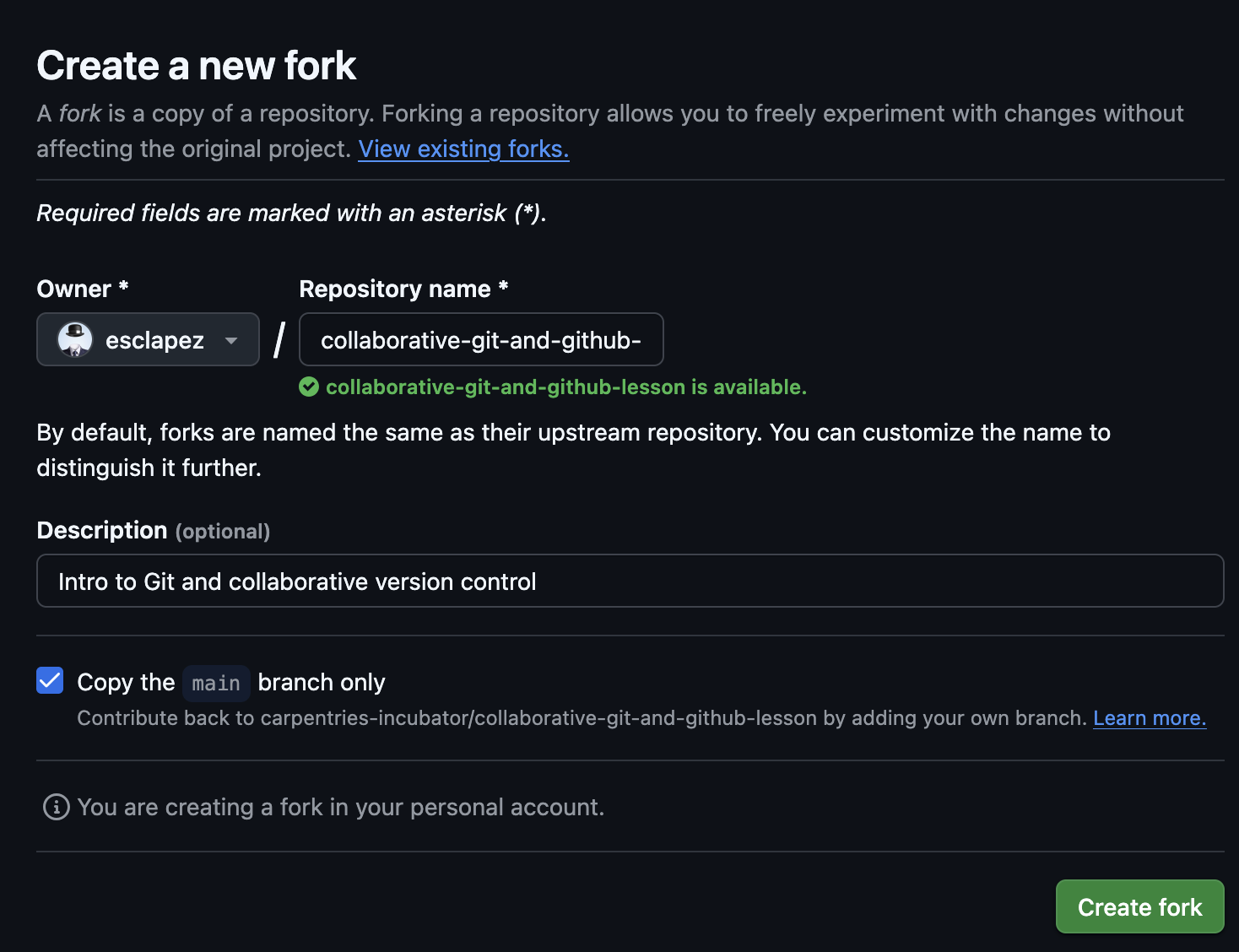Last updated on 2025-03-18 | Edit this page
Overview
Questions
- How can I use version control to collaborate with external collaborators?
Objectives
- Introduce the concept of fork
- Understand distributed workflow and when to use it
What is a fork ?
So far, we have seen how to use git to collaborate with internal collaborators, i.e. with other people working on the same repository within the same organization.
Often times, we also want to collaborate or contribute to repositories not owned by us or by an organization we belong to. In that case, we are not allowed to push changes to the repository, and we need to use a different workflow.
Platforms like GihHub (or Gitlab) provide a way to create a mirror of a repository into an organization we belong to. In GitHub lingo, this is called a fork. Although the fork is a completely separate repository, GitHub keeps a dynamic link between the original repository and your fork to facilitate collaboration (opening a Pull Request, syncing changes, etc.).
How to create a fork ?
Log in to GitHub, then navigate to the repository you want to fork. Then click on the “Fork” button near the top right corner:

On the next page, you will have the choice to place the fork on your personal account or any organization you belong to. You can also change the name of the forked repository.

After a few seconds, you will be redirected to the forked repository:

Opening a pull request from a fork
Once you have created your fork of the repository, you can clone the forked repository:
or add the fork as a remote to an existing clone of the original repository:
Modify the content of the reposotory to your liking then add your contribution to a new branch and push it to your fork (assuming you have added the fork as a new remote):
Navigate to your fork of the repository in your web browser and from the Pull requests tab, open a new pull request. By default, GitHub opens the pull request against the main branch of the original repo:

Exercise: Working as an external contributor (in pairs)
- PERSON A: Create an issue in Person B’s repository
- PERSON A: Fork the repository to their own (= Person A’s) account
- PERSON A: Clone the repository, make changes, push them back to the fork
- PERSON A: Submit a Pull Request from the fork to the original repository
- PERSON B: Make a change in the original repository in the same place as person A’s proposed changes
- PERSON A: Solve the merge conflict in the Pull Request
- PERSON B: Review/Approve the Pull Request
- PERSON B: merge the Pull Request
- Use distributed flow for external collaborations
